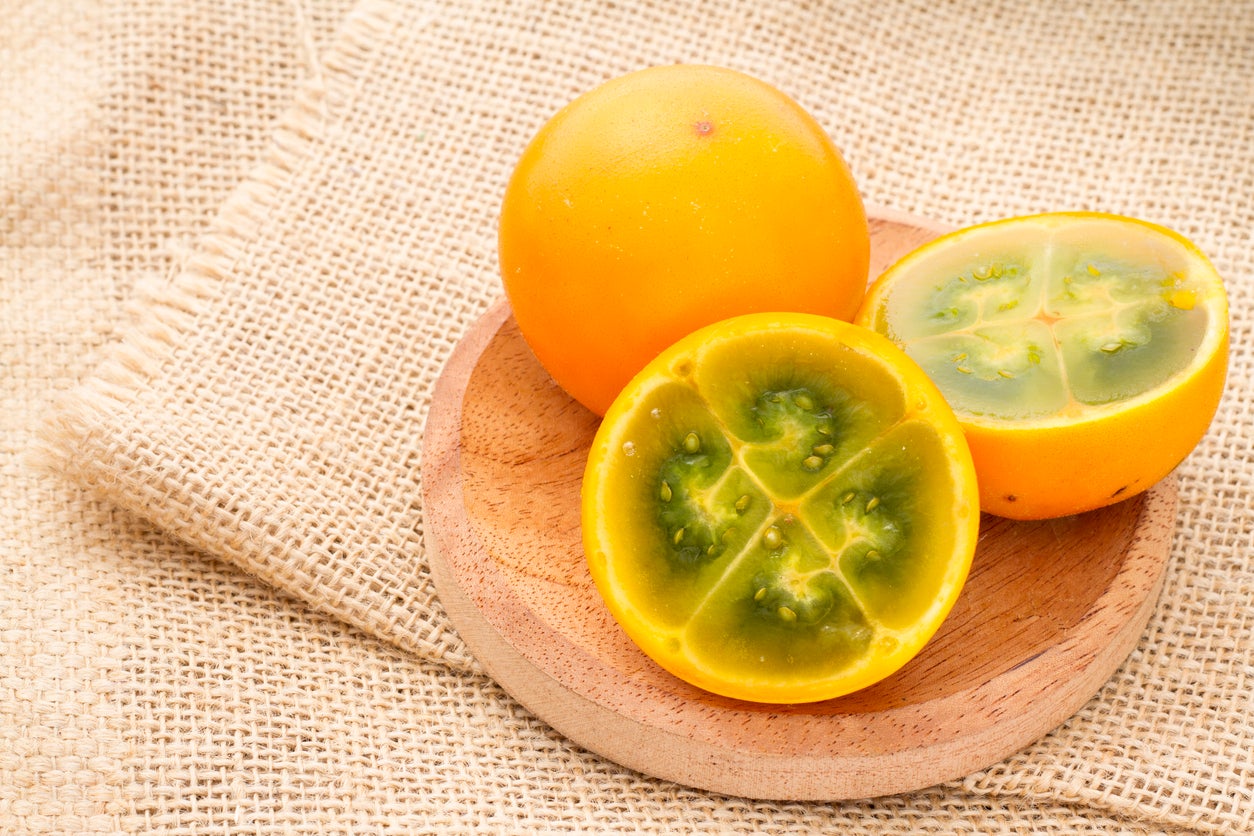Picking Naranjilla Fruits: Tips For Harvesting Naranjilla


Naranjilla, “little oranges,” are rather odd-looking, fruiting shrubs that produce exotic blooms and golf-ball sized fruit in the warm climates of USDA plant hardiness zones 10 and 11. It is indigenous to South America.
Naranjilla (Solanum quitoense) is member of the nightshade family along with tomato, potato, and tamarillo, and the fruit tends to be flavorless and unpleasant when unripe. However, it can be tangy and delicious if naranjilla harvest occurs at the optimum point of ripeness. So, how to you know when to harvest naranjilla? How do you go about picking naranjilla? Let’s learn more about harvesting this interesting fruit.
When to Harvest Naranjilla: Tips on How to Pick Naranjilla
Generally, you really don’t need to “pick” naranjilla, as the best time for harvesting naranjilla is when the fruit is so ripe it falls naturally from the tree, usually between October and December. Fully ripened fruit may actually split.
You may be tempted to pick the fruit when it turns yellowish orange, but the fruit isn’t ready at this point. Wait until naranjilla is fully ripe, then pick it off the ground and remove the prickly fuzz with a towel.
If you prefer, you can pick the fruit earlier, when it begins to color, and then allow it to ripen off the tree for eight to ten days. There’s no secret to harvesting naranjilla – just grab a fruit and pull it from the tree. Wear gloves to protect your hands.
Once harvested, the fruit will keep at room temperature for at least a week. In the refrigerator, you can store it for a month or two.
Many people prefer to make juice after harvesting naranjilla, as the skin is thick and the fruit is full of tiny seeds. Or you can cut the fruit in half and squeeze the citrusy juice into your mouth – maybe with a sprinkle of salt.
Sign up for the Gardening Know How newsletter today and receive a free copy of our e-book "How to Grow Delicious Tomatoes".

A Credentialed Garden Writer, Mary H. Dyer was with Gardening Know How in the very beginning, publishing articles as early as 2007.